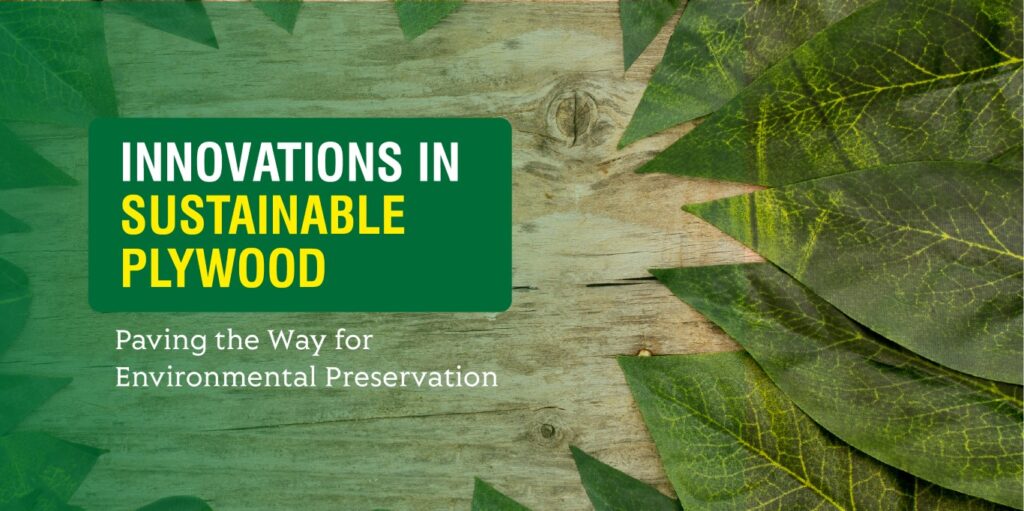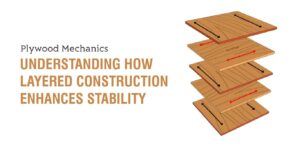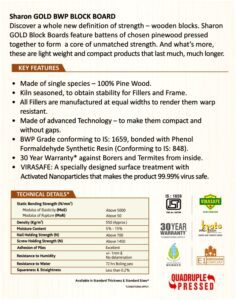



In the last decade or so, there has been an ever-growing emphasis on sustainable materials in the construction industry. Plywood is one such material, with its versatility, longevity, and productivity.
Plywood’s popularity is clear from the numbers: the size of India’s plywood market is expected to grow at an astounding rate of 6.34% CAGR (compounded annual growth rate) from 2023 to 2029 and it will reach nearly USD 2.25 billion at the end. But plywood is also highly sustainable.
In this write-up, we will explore how innovations in sustainable plywood are revolutionizing the construction and architectural landscapes and, in the process, promoting a greener future.
Eco-Friendly Sourcing
Traditionally, plywood was manufactured using hardwood from deforestation-prone regions, which would lead to serious ecological consequences. But sustainable plywood manufacturers have shifted towards responsibly sourced timber.
These companies prioritize Forest Stewardship Council (FSC) certified wood, which ensures that the trees used for making plywood are harvested sustainably, maintaining the delicate balance of ecosystems. This dramatic shift in sourcing methods not only helps preserve forests, but also supports local communities and pushes for biodiversity.
Structural Insulated Panels (SIPs)
Sustainable plywood plays a massive role in the production of Structural Insulated Panels (SIPs). SIPs have a layer of plywood sandwiched between rigid foam insulation, which provides superior energy efficiency and structural integrity. As the name suggests, these panels offer fantastic insulation for the insides, thus reducing the reliance on heating and cooling systems. Plywood, through these SIPs, contributes to energy savings and minimizes the environmental impact associated with traditional construction methods.
Formaldehyde-Free Plywood
Formaldehyde is a chemical that is used in the production of plywood adhesives. It’s also quite dangerous, and is known to have adverse health effects on construction workers and residents alike. Nowadays, sustainable plywood manufacturers have reduced the use of formaldehyde in their products.
Formaldehyde-free plywood provides a healthier living environment for the occupants and reduces the emission of harmful volatile organic compounds (VOCs) into the atmosphere. It also improves indoor air quality, which is an ideal choice for eco-minded homeowners, architects, and builders.
Cross-Laminated Timber (CLT)
The advent of CLT, a multi-layered plywood, marks a significant leap in construction techniques. CLT has undeniable strength and stability, making it an automatic choice for load-bearing applications. The material enables architects and builders to create multi-storey structures entirely from wood. In the urban landscape dictionary this is called a “plyscraper”.
Simply Concluding
Obviously, innovation is the key in sustainable product development. With plywood, the construction industry is very well on track to transforming the materials sourcing mindset and come out with more eco-friendly products.
These advancements reduce the environmental impact of plywood production and help embrace a new era of
eco-friendly construction material that offers the same great features of traditional plywood. Explore more of such sustainable alternatives with SharonPly and make the conscious choice for the health of our planet.





















